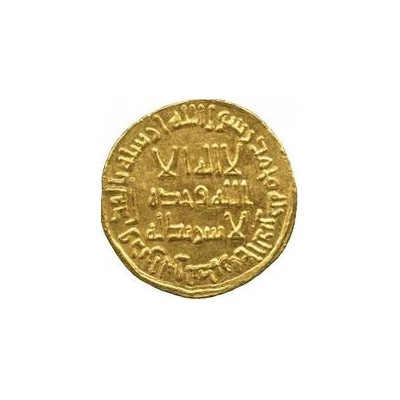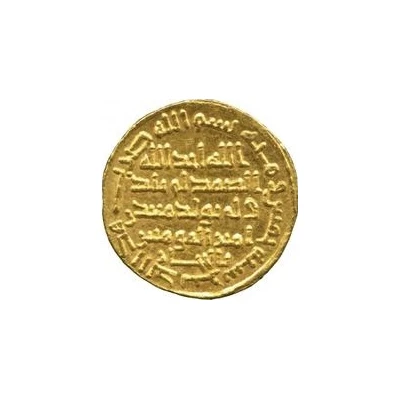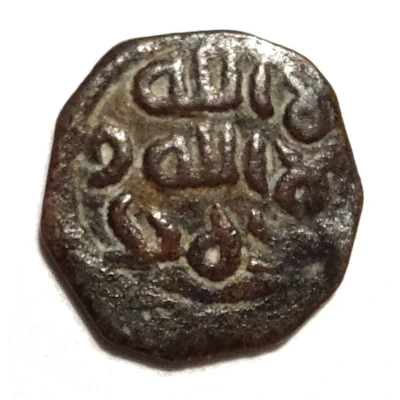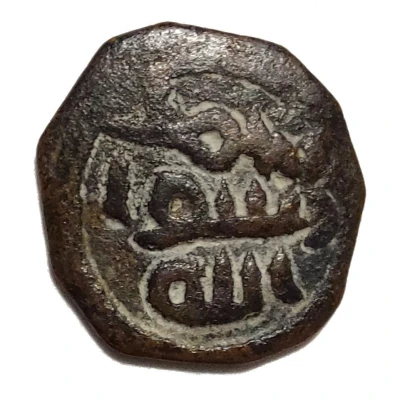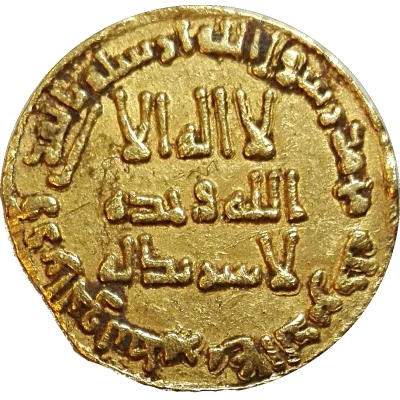
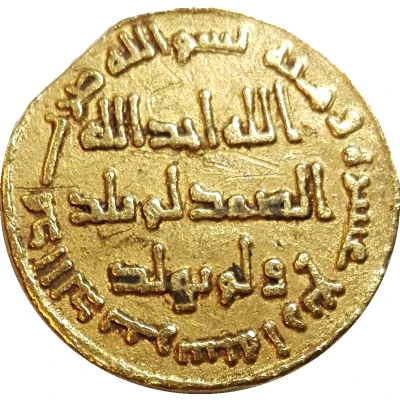

© simoneo80
Dinar - Anonymous no mintname
114 (733) year| Gold (.999) | 4.06 g | 19 mm |
| Issuer | Umayyad Caliphate |
|---|---|
| Type | Standard circulation coin |
| Year | 114 (733) |
| Calendar | Islamic (Hijri) |
| Value | 1 Dinar |
| Currency | Dinar (661-750) |
| Composition | Gold (.999) |
| Weight | 4.06 g |
| Diameter | 19 mm |
| Shape | Round (irregular) |
| Technique | Hammered |
| Orientation | Coin alignment ↑↓ |
| Demonetized | Yes |
| Updated | 2024-10-05 |
| Numista | N#137427 |
|---|---|
| Rarity index | 95% |
Reverse
Epigraphic lettering- field and edge
Script: Arabic
Lettering:
Rev. Center :
الله احد الله (allah 'ahad allah)
الصمد لم يلد (alsamad lam yalid)
و لم يولد (w lm yulad)
Rev. Margin :
دينار
تم ضرب هذا
بسم الله
أربعة عشرة و مائة
سنة
(al-dinar tama darab hdha bism allah fi arbet eshrt wamiaya sana)
Translation:
Rev. Center :
God is one God
Samad did not give birth
He was not born
Rev. Margin :
This Dinar was struck in the name of God in the year one hundred and fourteen
Comment
The gold dinar (Arabic: ﺩﻳﻨﺎﺭ ذهبي) is an Islamic medieval gold coin first issued in AH 77 (696–697 CE) by Caliph Abd al-Malik ibn Marwan. The weight of the dinar is 1 mithqal (4.25 grams). The word dinar stems from the Latin denarius aureus or "gold coin". The name "dinar" is in use for Sasanid gold coins, and also for Kushan and Kidarite gold. It is not known how these coins were named in their day.The first dinars were issued by the Umayyad Caliphate. Under the dynasties that followed the use of the dinar spread from Islamic Spain to Central Asia.
The reform involved substituting any images on the coins for writing. It was principally done because of the unease felt by Muslim clerics against the portrayal of images. From this time inscriptions predominate on Islamic coins, although there are some exceptions.
The inscriptions, which do not include the name of the caliph or the mint, state the essence of the Muslim message in Arabic, the Islamic profession of faith, the shahada. The inscriptions are in the angular Kufic script.
Along with the new design came a new weight standard. The Byzantine standard of 4.55 g, which had been previously used, was adjusted to 4.25 g, a weight also known as the mithqal.
- temp. Hisham ibn Abd al-Malik -
Date: 114 AH
أربعة عشرة ومائة
Interesting fact
One interesting fact about this coin is that it was issued during the reign of Caliph Abd al-Malik ibn Marwan, who ruled the Umayyad Caliphate from 685 to 705 CE. Abd al-Malik was instrumental in establishing the dinar as the standard currency of the Islamic world, and this coin is a testament to his efforts. The coin's design, which features the caliph's name and title, as well as the Islamic declaration of faith, "There is no god but Allah, and Muhammad is the Messenger of Allah," reflects the religious and political significance of the dinar during this period.
